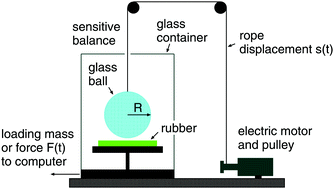Adhesion and friction between glass and rubber in the dry state and in water: role of contact hydrophobicity
Abstract
We study the contact mechanics between 3 different tire tread compounds and a smooth glass surface in water. We study both adhesion and sliding friction at low-sliding speeds. For 2 of the compounds the rubber–glass contact in water is hydrophobic and we observe adhesion, and slip-stick sliding friction dynamics. For one compound the contact is hydrophilic, resulting in vanishing adhesion, and steady-state (or smooth) sliding dynamics. We also show the importance of dynamical scrape, both on the macroscopic level and at the asperity level, which reduces the water film thickness between the solids during slip. The experiments show that the fluid is removed much faster from the rubber–glass asperity contact regions for a hydrophobic contact than for a hydrophilic contact. We also study friction on sandblasted glass in water. In this case all the compounds behave similarly and we conclude that no dewetting occur in the asperity contact regions. We propose that this is due to the increased surface roughness which reduces the rubber–glass binding energy.

- This article is part of the themed collection: Industry R&D collection


 Please wait while we load your content...
Please wait while we load your content...